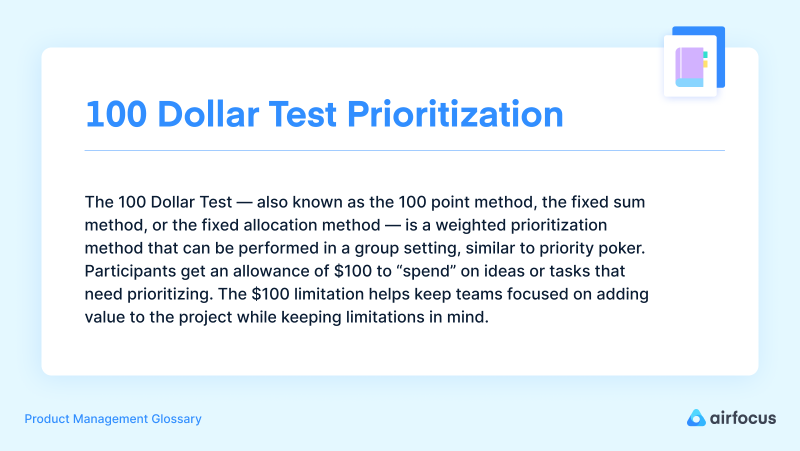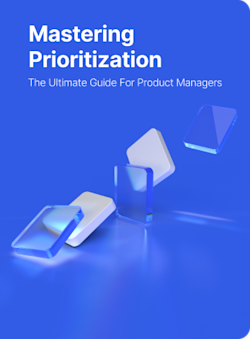100 Dollar Test Prioritization
What is the 100 Dollar Test?
100 Dollar Test prioritization definition
The 100 Dollar Test — also known as the 100-point method, the fixed sum method, or the fixed allocation method — is a weighted prioritization method that can be performed in a group setting, similar to priority poker. Participants get an allowance of $100 to “spend” on ideas or tasks that need prioritizing. The $100 limitation helps keep teams focused on adding value to the project while keeping limitations in mind.
What are the advantages and disadvantages of the 100 dollars prioritization?
As with all prioritization methods, there are upsides and downsides to the 100-dollar test. There are some situations where it will work great and some that are better suited to a different prioritization method.
Let’s look at some of the pros and cons of the 100-dollar prioritization test.
Pros
Uses weighted distribution similar to a weighted decision matrix
Can be combined with other prioritization methods
Sessions can be quick and fun
Simple, easily understandable concept
Keeps limitations in mind
Cons
There often needs to be discussions to clarify why a participant has chosen an idea and why they assigned their chosen dollar amount
Very susceptible to the HiPPO effect
Not always accurate — the idea with the most money may not be the best idea to move forward with

When should you use the 100 Dollar Test Method?
The 100-dollar test method is great for large teams. The rules need little explanation, and participants can think as they play each round. This also makes it an excellent method to use when you’re low on time and have to prioritize quickly.
The 100-dollar test is also a great tool to use in the late stages of planning when you already have a solid list of ideas to rank.
How does the 100-dollar test work?
The 100-dollar test is a simple concept for much more than prioritization. If you’ve ever done an auction-style fantasy football draft, you’ll be an instant expert at the 100-dollar test!
Each participant is given $100 to begin the session. They will write down how they want to “spend” that money across a list of ideas that require prioritization. Participants can spend everything on one idea, or split their money between different ideas, giving more money to ideas they feel are more important.
Tips for product managers when using 100 Dollar Test Prioritization
Build a list of items that need prioritization before the 100 Dollar Test.
Clarify the rules before starting the session
Don't make your list too long, and don't take too long to decide on the list
Stick to smaller groups. Around 5-15, people work best

General FAQ

Glossary categories
Prioritize with confidence

Experience the new way of doing product management








